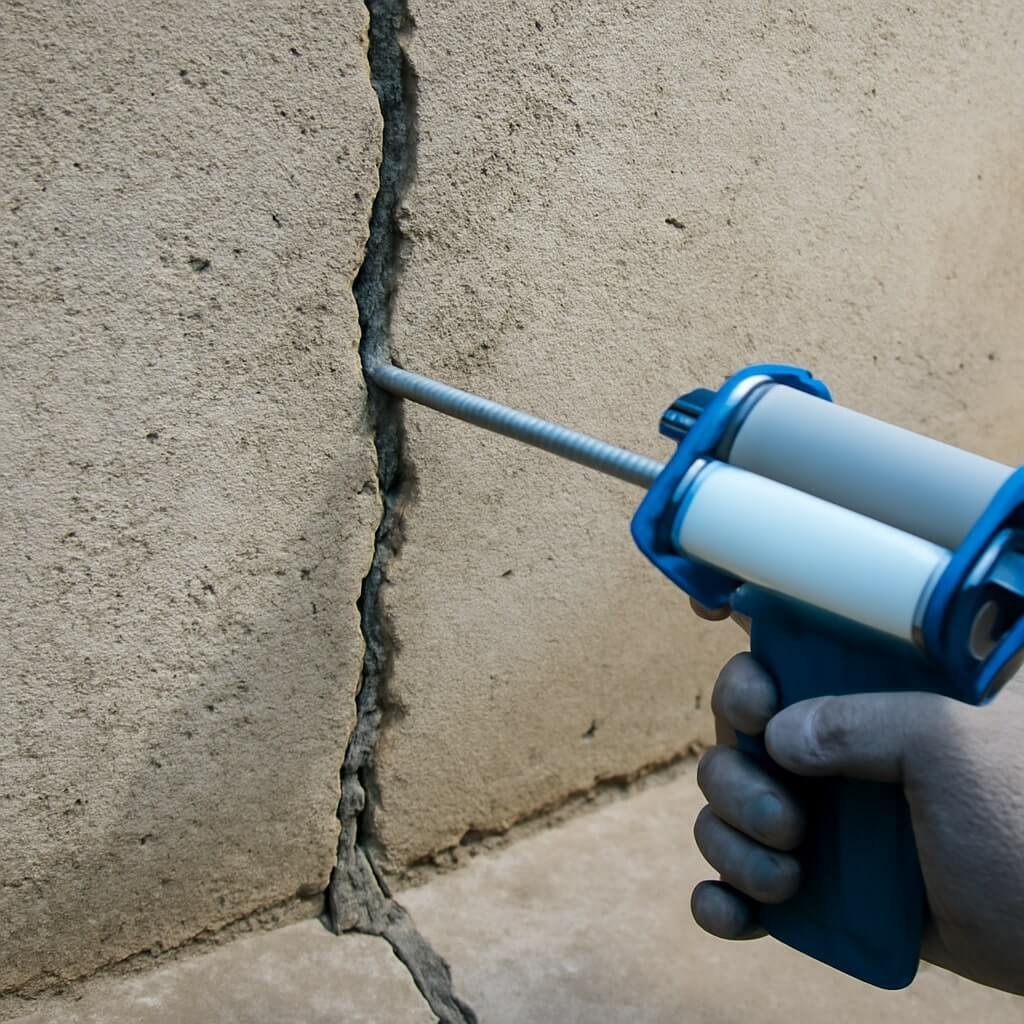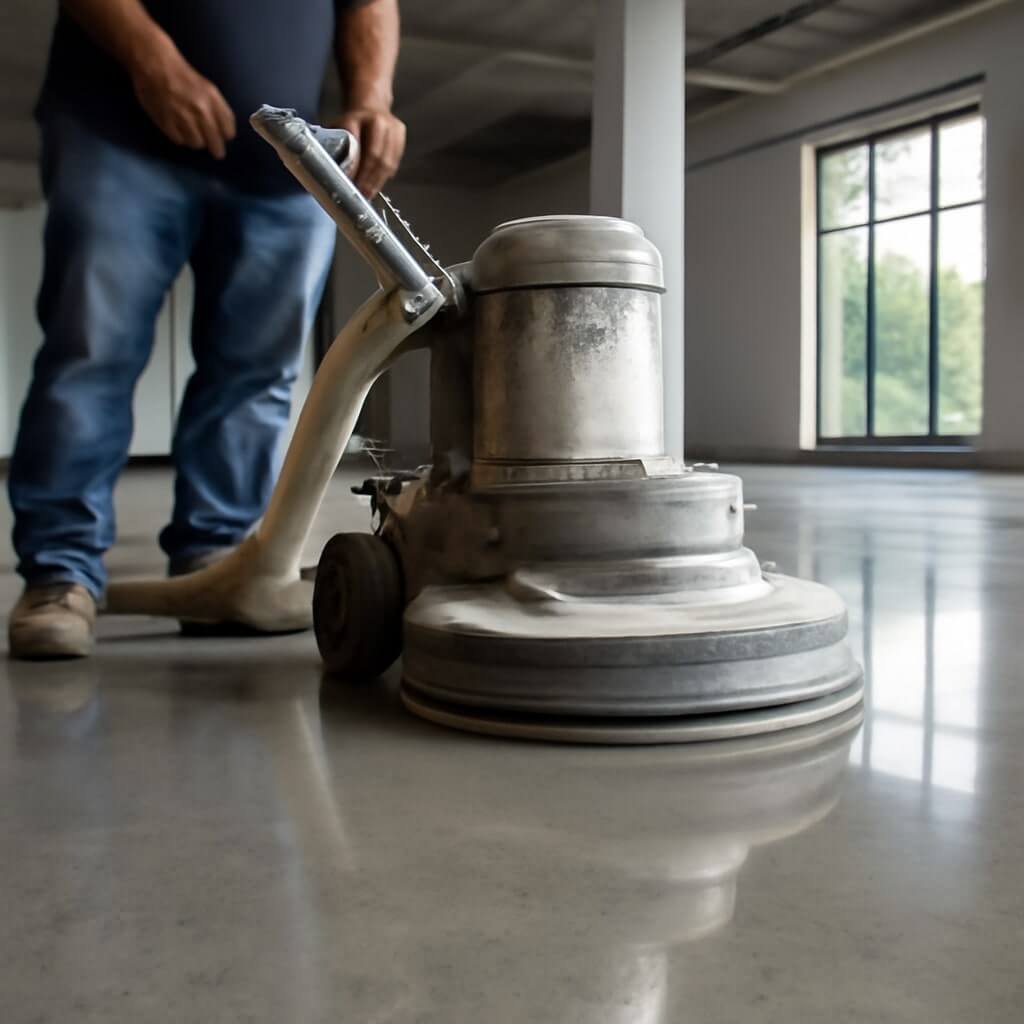Concrete is a durable, long-lasting material used in countless construction projects worldwide. However, like any material, it isn’t immune to damage, especially cracking. Cracks can appear for many reasons: settling, temperature changes, moisture intrusion, or heavy loads. If left unrepaired, these cracks can compromise the integrity and safety of concrete surfaces, leading to costly repairs or replacements.
Fortunately, the market offers many products specifically designed for concrete crack repair. In this article, we’ll explore the best products available today, from epoxy injection kits to hydraulic cement, and provide you with practical advice to restore your concrete effectively.
2. Understanding Concrete Cracks
Before diving into repair products, it’s essential to understand the types of cracks you might encounter:
- Hairline Cracks: Very fine cracks, mostly cosmetic but can worsen over time.
- Structural Cracks: Wider cracks that affect the load-bearing capacity.
- Settlement Cracks: Caused by uneven ground settling.
- Shrinkage Cracks: Occur when concrete dries and shrinks.
- Thermal Cracks: Result from temperature fluctuations, causing expansion and contraction.
Knowing the cause and type of crack helps select the right repair product and method, ensuring a long-lasting fix.
3. Why Repairing Concrete Cracks Matters
Repairing cracks is crucial for several reasons:
- Structural Integrity: Unrepaired cracks can weaken the concrete structure, leading to failures.
- Water Infiltration Prevention: Cracks allow water and chemicals to seep in, causing corrosion and freeze-thaw damage.
- Aesthetics: Cracks diminish the appearance of surfaces like driveways or patios.
- Safety: Large cracks can create trip hazards.
Ignoring cracks often results in more severe damage, requiring extensive repairs or replacement down the line.
4. Types of Concrete Crack Repair Products
Concrete crack repair products generally fall into the following categories:
- Epoxy Injection Kits
- Polyurethane Foam Crack Fillers
- Hydraulic Cement
- Concrete Patch Compounds
- Sealants and Coatings
Each has its strengths, ideal use cases, and limitations, which we’ll explore in detail below.
5. Epoxy Injection Kits
Epoxy injection is a popular method for repairing structural cracks. Epoxy resin is a strong adhesive that penetrates cracks and bonds the concrete back together.
Advantages:
- High-strength repair restores structural integrity.
- Waterproof and chemically resistant.
- Suitable for cracks as narrow as 0.002 inches.
Recommended Products:
| Product Name | Key Features | Approximate Price |
|---|---|---|
| Simpson Strong-Tie® EP 2000 | High-strength, low viscosity | $50 – $70 per kit |
| PC-Concrete Epoxy Crack Repair Kit | Easy application, durable finish | $40 – $60 per kit |
Epoxy injections are best applied by professionals due to the precise techniques required.
6. Polyurethane Foam Crack Fillers
Polyurethane foam fillers expand to fill cracks, providing flexibility and waterproof sealing.
Advantages:
- Flexible and can accommodate slight movement.
- Ideal for active leaks and water-bearing cracks.
- Fast curing and easy to apply.
Recommended Products:
| Product Name | Key Features | Approximate Price |
|---|---|---|
| SikaFlex® Self-Leveling Sealant | Expands on application, waterproof | $25 – $40 per tube |
| BASF MasterSeal® 345 | Excellent adhesion, flexible | $30 – $50 per tube |
These fillers are perfect for cracks that may still be moving or leaking.
7. Hydraulic Cement Repair
Hydraulic cement is a quick-setting compound that hardens on contact with water, making it ideal for stopping active leaks.
Advantages:
- Sets in minutes.
- Expands as it cures to seal cracks tightly.
- Good for below-grade and wet conditions.
Recommended Products:
| Product Name | Key Features | Approximate Price |
|---|---|---|
| Quikrete Hydraulic Water-Stop Cement | Fast-setting, water-resistant | $8 – $15 per bag |
| Sakrete Fast Setting Cement | Durable and expands while curing | $10 – $20 per bag |
Great for basement walls or water tanks needing rapid repair.
8. Concrete Patch Compounds
Concrete patches are thick mixtures applied over cracks or surface damage to restore smoothness and strength.
Advantages:
- Easy application.
- Can be molded to match surface texture.
- Durable and paintable after curing.
Recommended Products:
| Product Name | Key Features | Approximate Price |
|---|---|---|
| DAP Concrete Patch | Fast drying, easy to spread | $15 – $25 per tub |
| Quikrete Vinyl Concrete Patch | Strong, good adhesion | $20 – $30 per bag |
These are ideal for surface cracks or spalled areas.
9. Sealants and Coatings for Crack Prevention
Sealants and coatings don’t repair cracks but help prevent new ones by protecting concrete from moisture and chemicals.
Types:
- Acrylic sealers
- Penetrating sealers
- Epoxy coatings
Popular Brands:
| Product Name | Type | Approximate Price |
|---|---|---|
| RadonSeal Concrete Sealer | Penetrating sealer | $25 – $40 per gallon |
| Quikrete Acrylic Concrete Cure & Seal | Acrylic sealer | $15 – $25 per gallon |
Regular sealing prolongs the life of concrete surfaces by preventing crack formation.
10. DIY vs Professional Concrete Crack Repair
Many homeowners attempt DIY repairs, which can be effective for minor cracks using epoxy kits or patch compounds. However, large or structural cracks usually require professional assessment and repair to ensure safety.
DIY Pros:
- Cost-effective.
- Immediate results.
- Satisfaction from personal accomplishment.
Professional Pros:
- Proper diagnosis and method.
- Long-lasting, guaranteed repair.
- Access to industrial-grade products and tools.
11. Step-by-Step Guide to Using Concrete Crack Repair Products
A general process for repairing concrete cracks includes:
- Clean the Crack: Remove loose debris and dirt.
- Prepare the Surface: Use a wire brush or grinder if necessary.
- Apply Primer (if needed): For epoxy or polyurethane products.
- Inject or Apply Repair Material: Follow the manufacturer’s instructions.
- Allow to Cure: Ensure proper drying time before use.
- Finish and Seal: Smooth surface and apply sealant if desired.
12. Tools and Accessories Needed for Effective Repair
Essential tools include:
- Wire brushes
- Caulking guns
- Mixing paddles
- Putty knives or trowels
- Protective gloves and goggles
Having the right tools ensures a smooth and safe repair process.
13. Common Mistakes to Avoid During Repair
- Not cleaning the crack properly.
- Using the wrong repair product.
- Ignoring active leaks or movement.
- Skipping sealant application.
- Rushing curing times.
Avoiding these pitfalls ensures durability and effectiveness.
14. Maintenance Tips Post-Repair
- Regularly inspect repaired areas.
- Apply sealants annually.
- Avoid heavy loads on repaired cracks initially.
- Keep surfaces clean to prevent dirt buildup.
15. Frequently Asked Questions (FAQs)
How long does concrete crack repair last?
With proper repair and maintenance, it can last 10 years or more.
Can I repair cracks myself?
Yes, for minor cracks, but consult professionals for structural damage.
What’s the best product for wet cracks?
Hydraulic cement or polyurethane foam fillers are ideal.
Do epoxy repairs change the color of concrete?
Some may, but many products are clear or paintable.
How soon can I use the surface after repair?
It varies by product, typically 24 to 72 hours.
Can repaired cracks reappear?
Yes, if underlying issues aren’t addressed or due to heavy movement.
16. Conclusion
Choosing the best products for concrete crack repair depends on the crack type, location, and desired durability. From strong epoxy injections to fast-setting hydraulic cement, each product offers unique benefits. Whether tackling a DIY project or hiring a pro, understanding your options will help restore your concrete surfaces safely and effectively.



